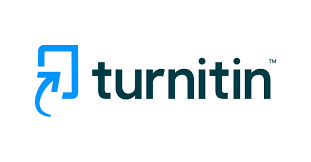EFFECTS OF WASHING TREATMENT ON THE CHARACTERISTICS OF ROADSIDE FRESH FRUITS
Abstract
Roadside fruits are very possible to be contaminated by heavy metals and microbial contamination, especially fruits that are usually consumed unpeeled, such as grapes, water guava, apples, and starfruit. Heavy metal contaminants that are hazardous to health include lead (Pd), cadmium (Cd), and arsenic (As), while harmful microbial contaminants include Escherichia coli and Salmonella thypii. This study aims to determine the effect of washing treatment on the characteristics (heavy metal and microbial contamination) of some fresh fruit. Washing process using running water and food grade soap. The design of the study used is Randomized Block Design, if it had a significant effect, it was further tested using the Duncan Multiple Range Test (DMRT). The results of study showed that washing with food grade soap is preferable, as it shows a significant reduction in the levels of heavy metal and microbiological contents up to 0.000 mg / kg for Pb and Cd; 0.041 mg / kg for As; 0 kol / g for E. coli and 0 kol / 25g for Salmonella thypii.
Full Text:
PDFReferences
Association of Official Analytical Chemists, & Association of Official Agricultural Chemists (US). 2006. Official methods of analysis of the Association of Official Analytical Chemists (Vol. 2). The Association.
Ayu CC. 2002. Mempelajari Kadar Mineral dan Logam Berat pada Komoditi Sayuran Segar di Beberapa Pasar di Bogor [Skripsi]. Bogor : Fakultas Teknologi Pertanian, Institut Pertanian Bogor.
Bhattacharya P, Samal AC, Majumdar J, dan Santra SC. 2010. Arsenic contamination in rice, wheat, pulses, and vegetables: a study in an arsenic affected area of West Bengal, India. Water, Air, & Soil Pollution, 213(1-4), 3-13.
Beuchat LR. 2002. Ecological factors influencing survival and growth of human pathogens on raw fruits and vegetables. Microb Infect 4: 413– 23.
Boateng CN. 2016. Analysis of Post Harvest Losses in the Mango Marketing Channel in Southern Ghana (Doctoral dissertation, University of Ghana).
Chen G, Zeng G, Tang L, Du C, Jiang X, Huang G, ... & Shen G. 2008. Cadmium removal from simulated wastewater to biomass byproduct of Lentinus edodes. Bioresource technology, 99(15), 7034-7040.
Horsfall M, & Spiff AI. 2005. Effect of metal ion concentration on the biosorption of Pb2+ and Cd2+ by Caladium bicolor (wild cocoyam). African Journal of Biotechnology, 4(2), 191-196.
Gil MI, Selma MV, Suslow T, Jacxsens L, Uyttendaele M, & Allende A. 2015. Pre-and postharvest preventive measures and intervention strategies to control microbial food safety hazards of fresh leafy vegetables. Critical reviews in food science and nutrition, 55(4), 453-468.
Mazumder DNG, Haque R, Ghosh N, De BK, Santra A, Chakraborti D, & Smith AH. 2000. Arsenic in drinking water and the prevalence of respiratory effects in West Bengal, India. International journal of epidemiology, 29(6), 1047-1052.
Morales KH, Ryan L, Kuo TL, Wu MM, & Chen CJ. 2000. Risk of internal cancers from arsenic in drinking water. Environmental health perspectives, 108(7), 655-661.
Rahman M. 2002. Arsenic and contamination of drinking-water in Bangladesh: a public-health perspective. Journal of Health, Population and Nutrition, 193-197.
Rahimi E. 2013. Lead and cadmium concentrations in goat, cow, sheep, and buffalo milks from different regions of Iran. Food chemistry, 136(2), 389-391.
Srivastava AK, Hasan SK, & Srivastava RC. 2001. Arsenicism in India: dermal lesions and hair levels. Archives of environmental health, 56(6), 562.
Li X, Tang Y, Xuan Z, Liu Y, & Luo F. 2007. Study on the preparation of orange peel cellulose adsorbents and biosorption of Cd2+ from aqueous solution. Separation and Purification Technology, 55(1), 69-75.
DOI: http://dx.doi.org/10.33512/fsj.v3i1.11009
Refbacks
- There are currently no refbacks.

This work is licensed under a Creative Commons Attribution-ShareAlike 4.0 International License.











